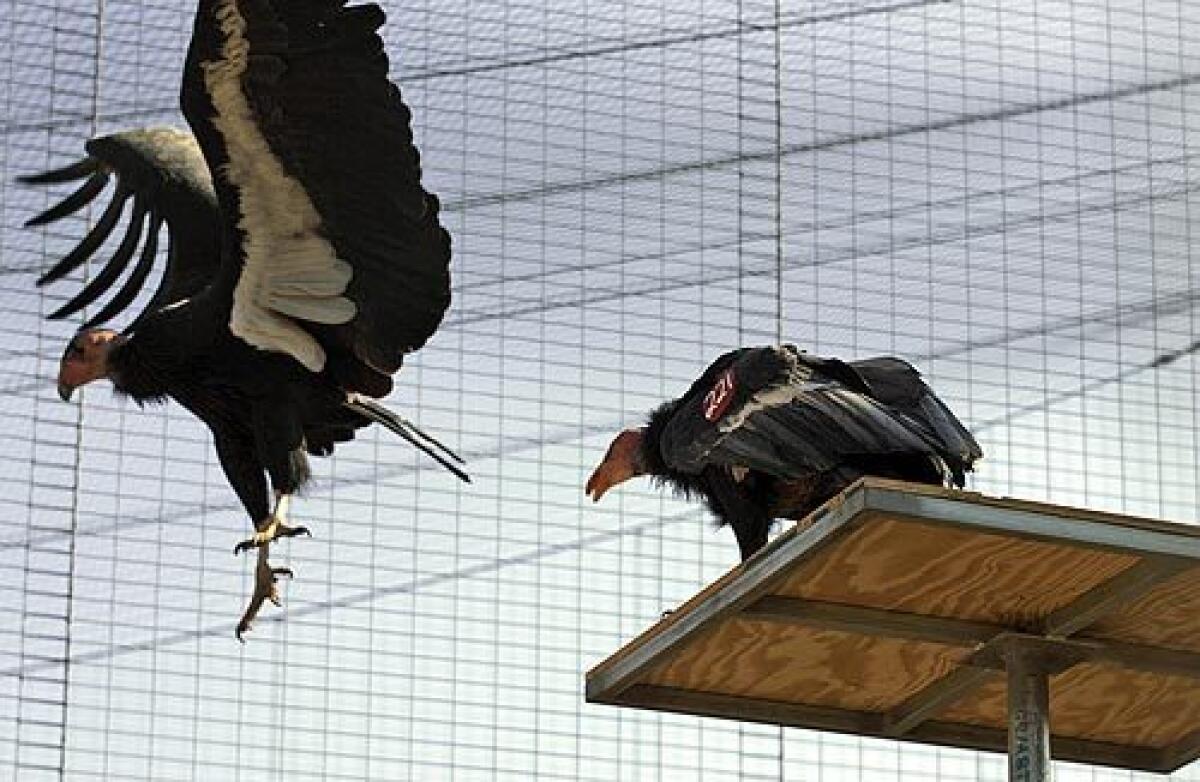From the archives: Evacuated condors settle into new facility in San Diego

- Share via
Reported from San Diego — Athena, an Andean, was first to return, followed by Apollo, her mate. Their offspring, as yet unnamed, appeared to be a bit overwhelmed by the experience and preferred to wait until the human beings were not watching so closely.
But before long Monday morning, all five condors -- three Andeans and two Californians named Simerrye and Ojja -- had settled into the newly rebuilt breeding facility at the San Diego Zoo’s Wild Animal Park.
A year ago today, zookeepers had to evacuate the condors as the Witch fire moved relentlessly through the dry grass of the San Pasqual Valley.
“I didn’t believe it was happening,” said condor keeper Sheila Murphy. “I could see the glow coming up over the mountain.”
Within hours of the condors’ evacuation, the breeding facility was destroyed by fire. In all, 600 acres of the park burned, although only two residents -- a clapper rail bird and a wild ass -- were lost. The condors have spent the last year in a smaller, less commodious facility in another part of the park. Athena and Apollo adjusted well. They mated on schedule and, eight months ago, a chick was hatched.
But the smaller facility was seen only as ad hoc housing. Once the ashes cooled, the park started negotiating with its insurance carrier.
There were 1,400 homes lost in the fires that swept through northern San Diego County, said Michael Mace, curator of birds at the Wild Animal Park. “One of them belonged to the condors,” he said.
The condors’ $1-million new breeding facility has four enclosures, each 60 feet by 30 feet, with rocks, ponds, trees and perches. Wire mesh keeps the birds from escaping, and a tall fence and razor wire keep out coyotes and bobcats.
Having more room to hop and fly gives adult condors better reproductive odds, Mace said. “All that translates into being reproductively fit.”
Within minutes of hopping out of his traveling cage, Apollo had flown to a perch and spread out his dark wings to their full 9-foot span. As his wings soaked up the morning sun, he seemed to gesture to Athena to join him. She did.
The Wild Animal Park has 29 condors in several facilities, part of a program to breed the endangered species in captivity and then release the young into the wild.
The Andean chick is set to be released into the wilds of Colombia next year.
The breeding facilities are off-limits to the public. But three condors are on exhibit at the Condor Ridge site.
Their keepers give the condors a diet of rabbit, mice, trout, cow spleen and a processed meat product. The mating, which includes a ritualistic display of feathers, is up to the birds.
“They just do what they do,” Murphy said.
Perry is a Times staff writer.
More to Read
Sign up for Essential California
The most important California stories and recommendations in your inbox every morning.
You may occasionally receive promotional content from the Los Angeles Times.










